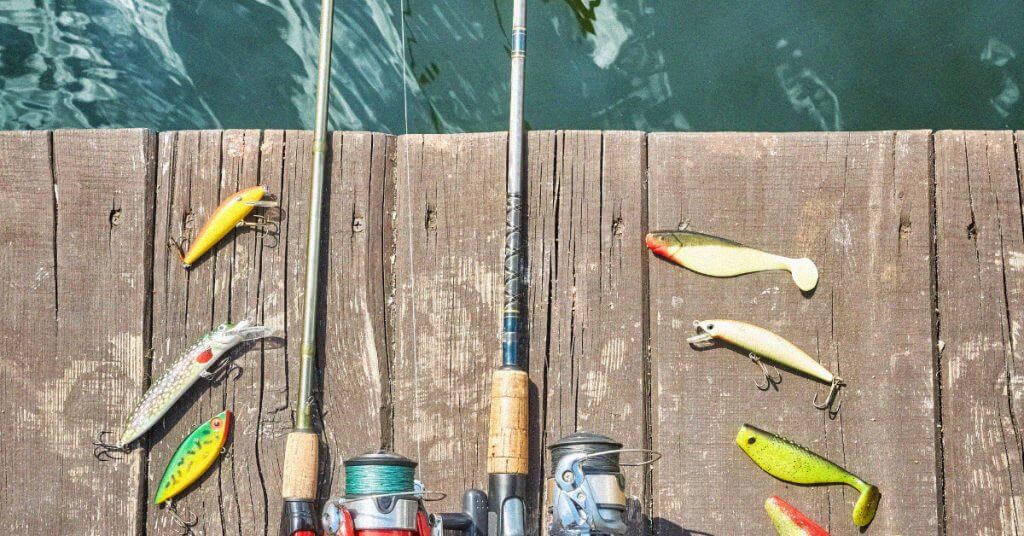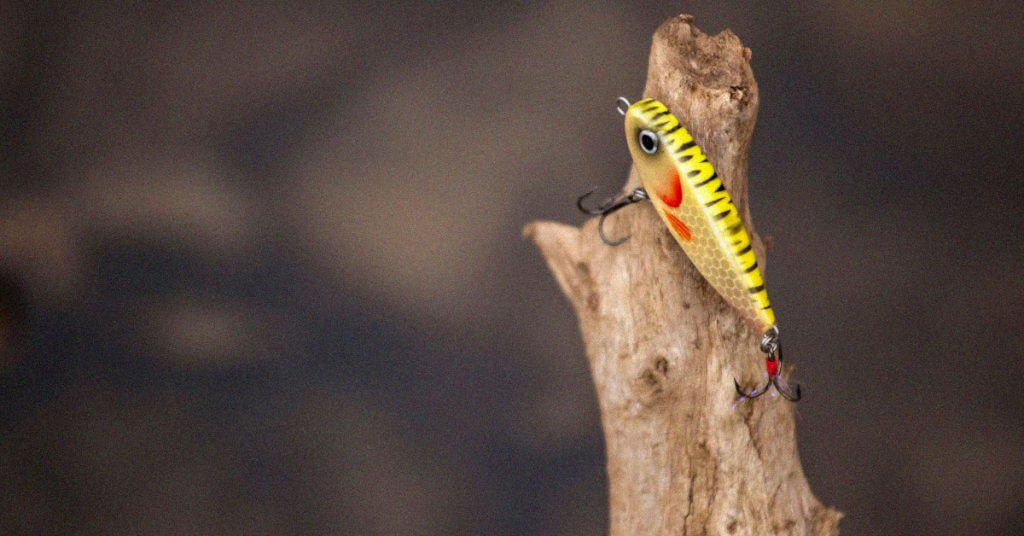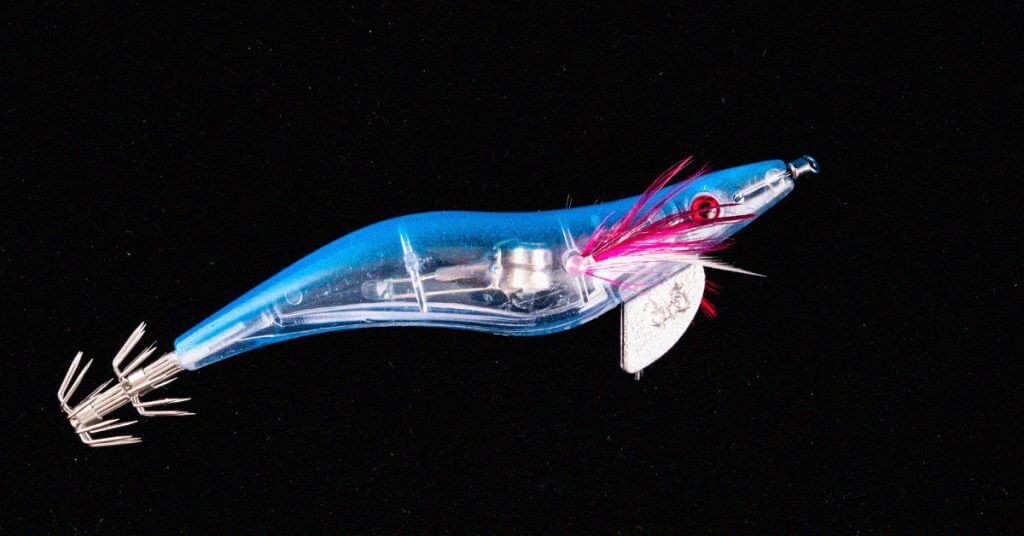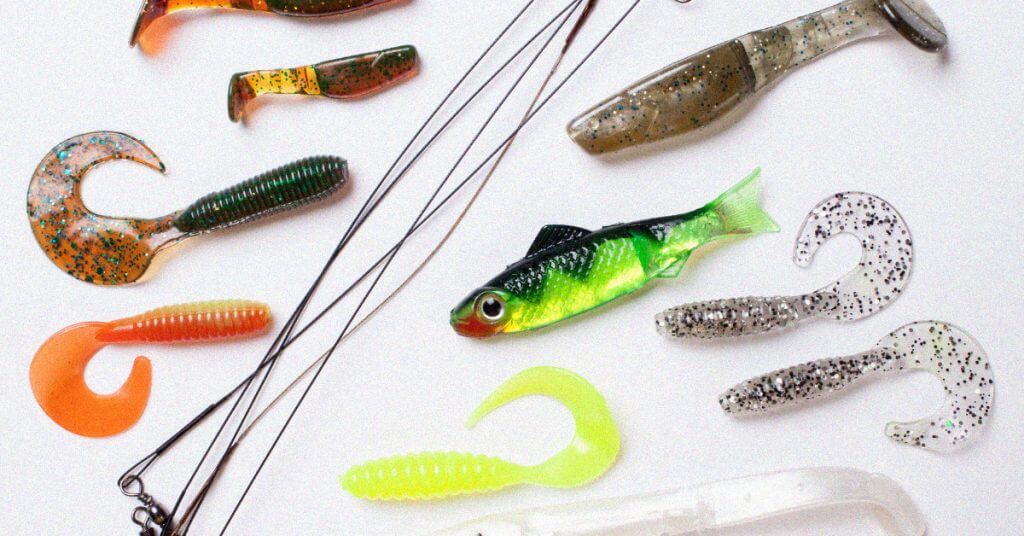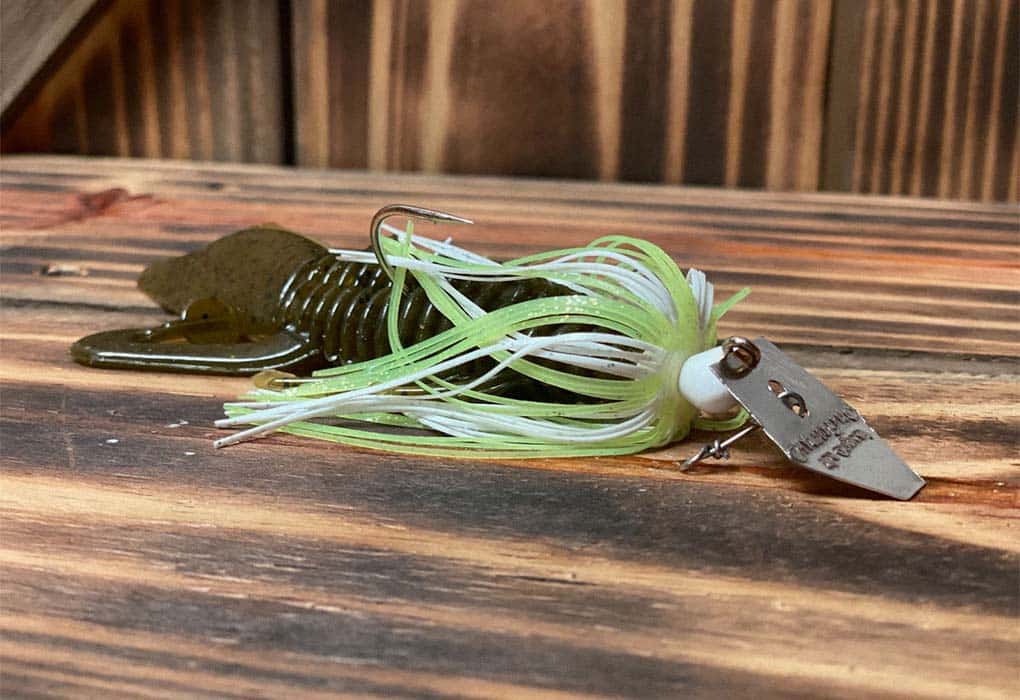
Learning how to rig a chatterbait right will help you get more bites and land more bass.
The chatterbait is known by several names, including the bladed jig, bladed swim jig, and vibrating jig.
Notice most of them have “jig” in the name; this is important for us because rigging a chatterbait is nearly identical to rigging a jig since they’re very similar lures.
No matter if you have the Z-Man chatterbait in your tackle box or another brand of a bladed jig, implementing the following fishing tips will help you land your next big bass.
Keep scrolling to learn how to put a trailer on a chatterbait.
How to Rig a Chatterbait for Bass Fishing
YBG Community Coordinator Wesley Littlefield shows us how he rigs the chatterbait in this YouTube Video!
When I’m rigging a chatterbait, I keep a couple of things in mind that make it work the way it’s supposed to.
The first is keeping my trailer as straight as possible, and the other is keeping it compact.
I’ll explain why in a moment.
Step 1
Pick out your favorite chatterbait and trailer; we will discuss how to choose the best chatterbait trailers below.
Step 2
Insert the tip of the hook into the top of the soft plastic trailer. Make sure it’s centered; otherwise, you’ll have to repeat this step later.
Step 3
Push the hook into the soft plastic the length of the hook’s shaft. For the Z-Man Original Chatterbait, that’s about 1 ½“. Other vibrating jigs like the Zman Jack Hammer will be similar.
Step 4
Push the tip of the hook back through the soft plastic. Make sure you’re in the middle.
You want the soft plastic to hang an inch or two past the hook but no further.
It’s essential to keep it compact because if you don’t, bass will just bite the trailer and never get the hook in their mouth.
So you’ll miss a ton of bites because the trailer is too long.
Step 5
Check the straightness of the trailer. You want it to be straight horizontally and vertically. This means the hook needs to run down the middle of the trailer.
This is important because if it’s not straight, the bladed jig won’t function properly.
It might spin, causing your line to twist and cause a huge mess when you cast, or it might not allow it to wobble, defeating the purpose of a vibrating jig.
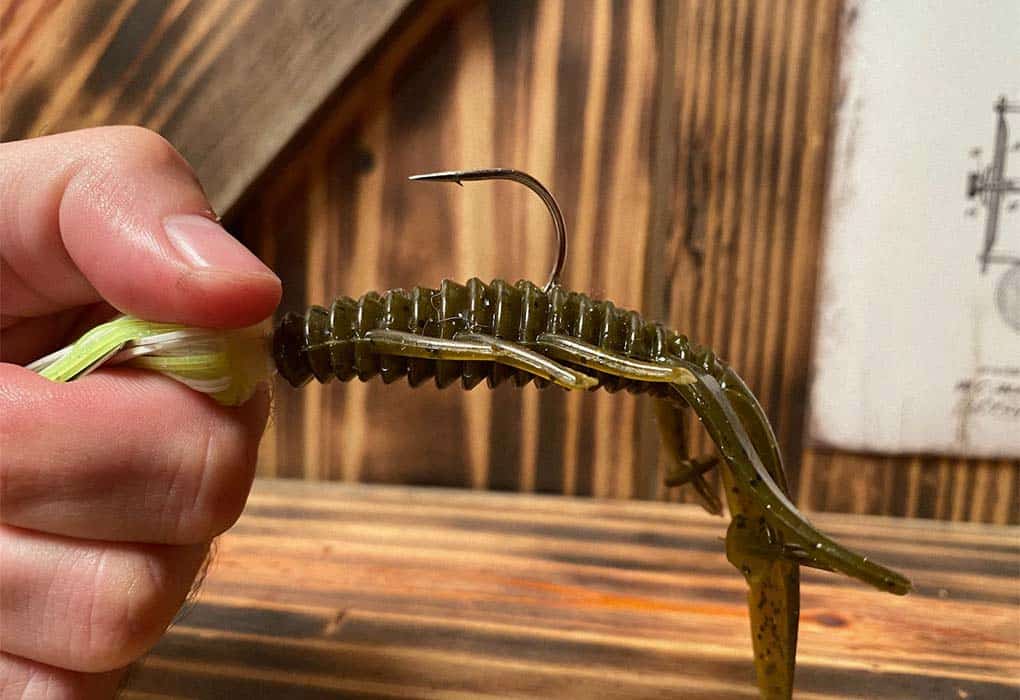
Step 6
Now it’s time to learn how to tie a chatterbait to fishing line so you can begin chatterbait fishing.
How to Tie on a Chatterbait
When bass anglers first pick up a chatterbait, it can be confusing knowing where to tie a chatterbait because there are three possible spots to tie.
Step 1
Use your favorite fishing line. I prefer fluorocarbon, but monofilament will work for tying on a chatterbait too.
Step 2
Place your line through the metal loop protruding from the blade. Do not tie to the one that is looped around the blade.
Use the loop that is on the end of the wire; this will give the lure the best action.
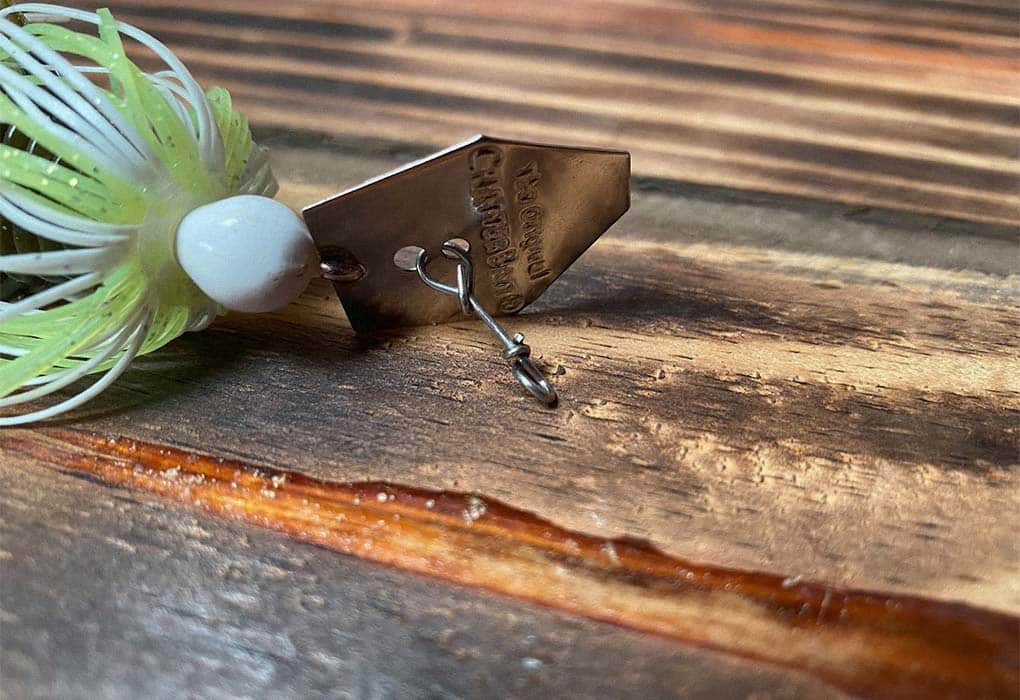
Step 3
Use your favorite knot when tying a chatterbait. I still use the Fisherman’s Knot, but many anglers prefer the Palomar Knot.
Step 4
Get to fishing!
Now that you know how to tie a chatterbait for bass, it’s time to learn how to fish a chatterbait so you can start reeling in lunkers.
Chatterbait Trailer Selection
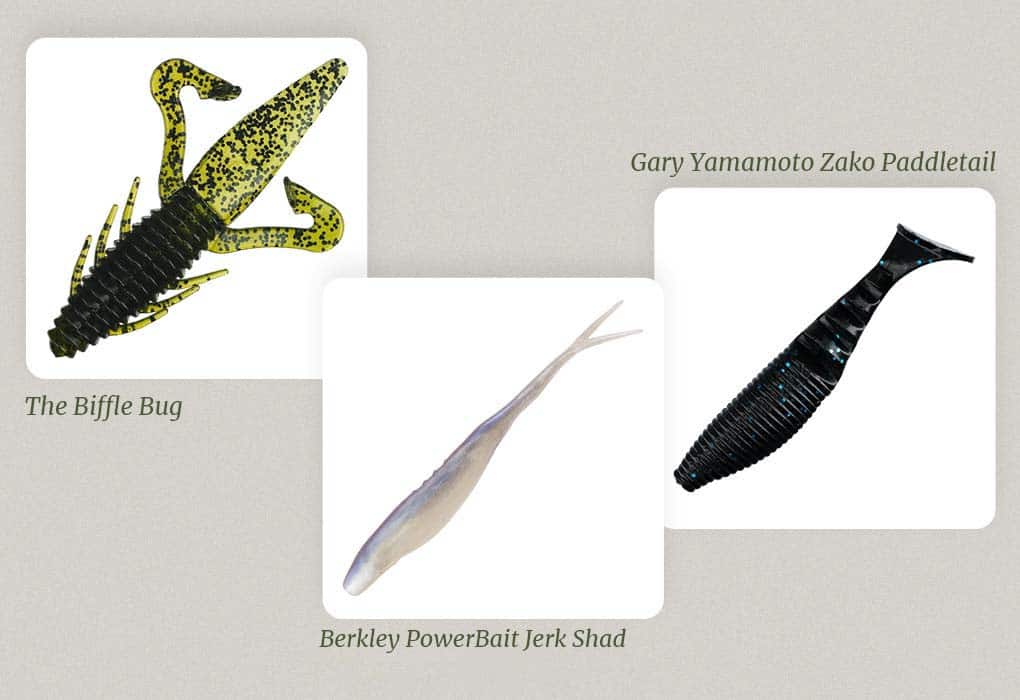
The species of bass you’re targeting, what food source you’re trying to imitate, water clarity, location, and fishing technique determine which chatterbait trailer is the best.
The one trailer I don’t use on a bladed jig is a worm. I save that for other bass fishing rigs because it’s more effective when used in those situations.
Bass Species
If you’re targeting largemouth bass, then using a trailer with a more prominent profile is going to be best because they won’t struggle to inhale the fishing lure.
Smallmouth bass require a more compact trailer to get the lure fully in their mouth.
Food Source
The food source is the most significant determining factor because you’ll need to decide on a paddle tail, craw, or fluke-style soft plastic.
A swimbait paddle tail and fluke imitate bait fish like shad or bluegill, while a craw is used to portray a crawdad.
Water Clarity
The water clarity will primarily determine the color of your trailer and chatterbait, but it should also factor into the trailer’s shape.
In dirty water, use trailers with a little more vibration, such as a paddle tail or craw.
While in clear water, use trailers with less movement like flukes.
Location
Vibrating jigs are designed to be used in shallow water near heavy cover. The large exposed hook makes it easy to snag on a brush pile, but they come through the grass surprisingly well.
When you’re fishing grassy areas, it’s best to have a trailer that will not tangle with the grass, such as a fluke.
A trailer resembling a crawdad or bluegill will be the best bet in more open water situations or during the spawn.
Bass Fishing Technique
The last thing that helps determine chatterbait rigging is which technique you are using.
If you’re going for a slow finesse approach, then a craw will be the best way to go because this method will require the bladed jig to be on the bottom, which is where crawfish will be.
If you’re burning the vibrating jig like a crankbait or spinnerbait, then a fluke will allow you to do this best.
Lastly, if you’re trying to work it slowly but keep it off the bottom, a wide flat plastic like a Biffle Bug is the best option.
Chatterbait Color Selection
I keep it very simple when choosing which color to throw for my trailers and chatterbaits.
I try to match my trailers as best I can to the color of the chatterbait I’m throwing. So if I’m using a green pumpkin bladed jig, then I’ll use a green pumpkin or watermelon trailer.
Dirty Water
In muddy water conditions, I use two extremes—dark colors like black and blue or a bright color like chartreuse.
Murky Water
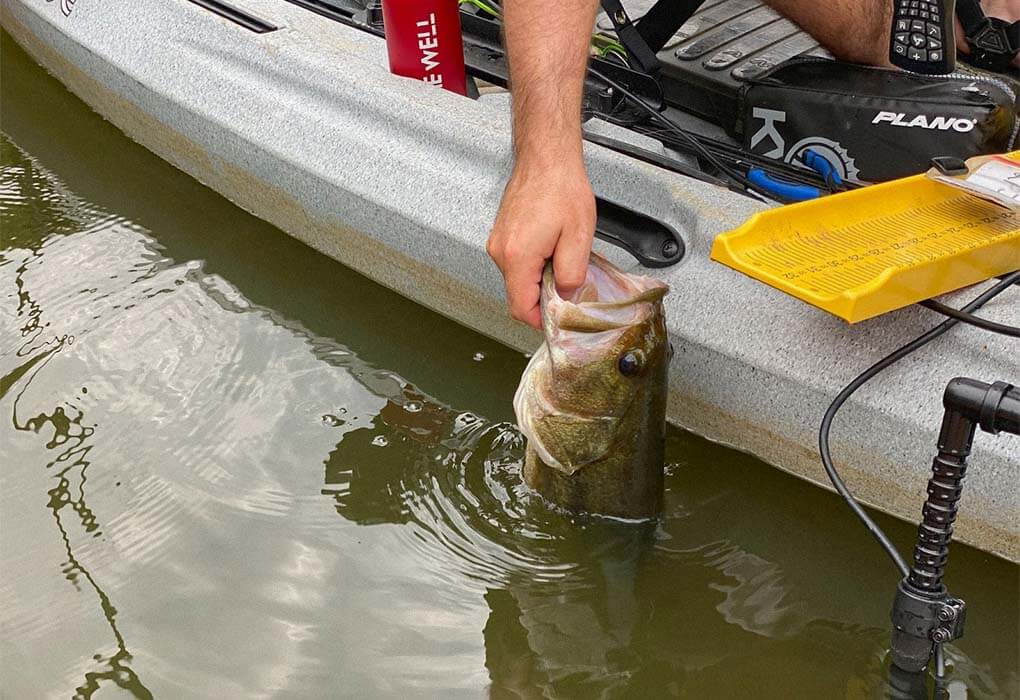
In murky water, I’ll still use chartreuse mixed with natural colors.
Clear Water
When fishing clear water, I use as natural colors as possible such as white or green pumpkin. Translucent lures are another excellent option.
Frequently Asked Questions
How do you rig up a chatterbait?
To rig up a chatterbait, put a soft plastic on the shaft of the hook. Make sure it’s as straight as possible, so it works properly.
How do you rig a chatterbait with a trailer?
To rig a chatterbait with a trailer, you have first to choose which trailer is best, which I spoke about earlier, then put the plastic on the hook as straight as possible.
Last Cast
When you learn how to rig a chatterbait, I guarantee it will help you catch more fish; as long as you remember where to tie on a chatterbait, keep trailer selection simple, and the trailer straight!
Let me know your favorite vibrating jig brand in the comments! I’m excited to try the new Slobbernocker from Berkley.

